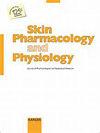Evaluation of Bioequivalence and Pharmacokinetic Profiles for Topical Desonide Cream Using Chinese Skins.
Abstract
Introduction: Skin-blanching assay has been established as a surrogate method for assessing bioequivalence of topical corticosteroids. This study aimed to apply the skin-blanching assay to evaluate the bioequivalence of a test desonide cream (T) compared with the reference Desonide? (R) using Chinese skins. Additionally, the pharmacokinetics and safety profiles were also assessed.
Methods: By detecting the degree of skin blanching under different dose durations in a pilot dose-duration-response study, the area under the observed effect-time curve (AUEC) and half of the maximum effect (ED50) was calculated. Based on this, the skin color of different time points after a dose duration of ED50, D1 (0.5 × ED50), and D2 (2 × ED50) were detected as a pharmacodynamic indicator to compare between test and reference creams. Single-center, single-dose, randomized, open-label, two-cycle crossover pharmacokinetic studies were designed to make sure the exposure of tested formulationswas not higher than that of the reference formulations. Subjects experiencing adverse events (AEs) were monitored and utilized for safety analysis.
Results: These studies involved 12 subjects for the dose-duration-response study, 100 subjects for the bioequivalence study, and 12 subjects for the pharmacokinetic study. The results showed that the population ED50 was 0.88 ± 0.45 h; the mean ratio of area under effective curve from 0 to 24 h (AUEC0-24h) of test and reference preparations was 0.95, with a 90% confidence interval as 88.09-101.72%, indicating the bioequivalence of the test formulation and Desonide?. The maximum plasma concentration (Cmax) and area under the concentration time curve from time 0 to the last time point (AUC0-t) of T and R were 20.8 ± 11.5 pg/mL versus 19.7 ± 10.1 pg/mL, respectively, and 451.04 ± 363.65 pgh/mL versus 541.47 ± 581.41 pgh/mL, respectively. The systemic exposure of a single dose of the test cream was not higher than that of the reference preparation. All of the volunteers experienced grade 1 AEs, suggesting that single administration of the test desonide cream is well tolerated in the Chinese healthy population.
Conclusions: This study demonstrated the applicability of skin-blanching assay in Chinese skins and established the bioequivalence of test and reference desonide creams.





